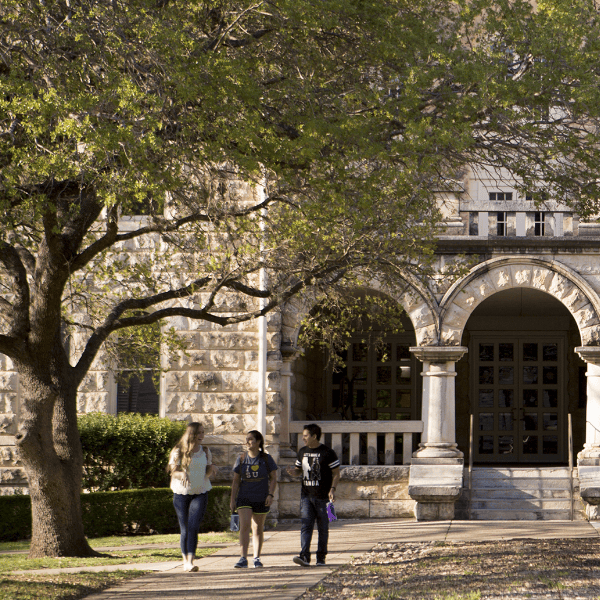Southwestern University is a private liberal arts college located in Georgetown, Texas. Southwestern offers bachelor's degrees in the arts, sciences, fine arts, and music as well as interdisciplinary and pre-professional programs.


75%
Of time saved managing backups and data protection with Druva
Two
Admins managing 50TB of data and 350+ employees with efficiency
About Southwestern University
The Challenge
Brandon Dieterich is one of two associate system and network administrators at Southwestern University. They are responsible for everything IT and security related, including keeping virtual machines running and ensuring end users can stay working. After another system administrator left, Dieterich stepped in to figure out the backup environment.
Previously, the backup environment relied on two legacy solutions to handle backups and data protection. Dieterich didn’t find the software to be very intuitive, even saying “It was difficult to figure out how the backup environment was set up, let alone being able to successfully use the legacy solutions for restores."
In addition, he discovered that protection for end users was very outdated. Dieterich explains, “We had technology from the 1990s that used roaming user profiles. People's desktops and documents were redirected to our server through an SMB share. That got backed up and then was stored in AWS. It was a huge hassle getting things restored when a file was deleted."
Maintaining the backup system was also a challenge. Dieterich says, “I would literally spend days trying to investigate our old backups and try and figure out what was being backed up, where it was going. If I needed to restore it, how I was gonna restore it." The user interface wasn’t much help either. Dieterich spent a lot of time looking at the terrible dashboard, trying to figure out if something went wrong, and how the team would fix it. In 2021 Dieterich had had enough, and as he put it, “It was time to do something."
The Solution
Southwestern looked to its partner, Unique Digital, to modernize the way they protect the university’s end-user devices. Unique Digital gave a few recommendations, one being the Druva Security Cloud, which they ultimately moved forward with.
When Dieterich saw Druva’s interface, it was like night and day compared to their previous solutions. It made Dieterich appreciate how easy Druva is to use, saying “Sure, the legacy solutions could do the same thing that Druva does. Druva just does it in a much simpler and more effective manner." The implementation was straightforward, and even better, the restores became a quick and painless task for Dieterich and the team.
Since Druva worked so well for end users, Dieterich expanded the solution to protect the university’s data centers. These include using the Druva isolation snapshot integration for their NAS storage array, as well as their VMware environment. Druva is so simple to use that he can walk his desktop crew through restoring data center files over the phone. Dieterich recalled one interaction where the desktop person said, “This is super easy to figure out."
A year later Southwestern was looking for a cloud-based backup solution for their 50+ TB of data on an array of NAS devices and VMware VMs. After exploring a few offerings, they ended up adding onto their Druva investment to manage all backups and data protection through a single pane of glass.
I really can't say enough about Druva, and how much better we all sleep at night. We know that should the worst happen; we should be able to get everything back up and running pretty quickly.
The Results
Initially, Druva was deployed to protect the laptops of the university’s high-end users. When the board got word of how much the executives liked the solution, they gave their approval to deploy Druva to protect laptops across the entire organization.
Gone are the days of spending hours trying to make sense of what Dieterich called a “really terrible dashboard." Now he logs in at the beginning of his day and makes sure all the jobs are green. He estimates he is saving about 75% of the time he spent on backup management with the previous solution.
Druva is also much easier to use than the previous solution. Dieterich is using Druva to help transition people from old machines to new machines. He says, "Druva is light years ahead of the tools and processes we used to have to endure with a legacy vendor."
Druva also fits well within the academic research cadence. Dieterich says, “If someone is on sabbatical, on a beach or other remote place and needs a file restored, it's super easy for a user to get access to that. And they're like ‘this, this is amazing.’”
Dieterich also loves that he can point a VM restore at any VMware cluster, pull it down, or even run it side-by-side with a currently running VM to compare file revisions.
Druva has been essential in recovering from a cyber-attack. Because they can trust their ability to restore files, Druva is part of the university’s overall security plan. When their print server was compromised through PaperCut (a comprehensive print management system), they were able to shut down the server and restore it using a good backup copy. This helped them get back up and running in a couple of hours instead of having to rebuild the entire print server over again from scratch.
Dieterich reports that “so far everything has been working just flawlessly." He continues, “I really can't say enough about Druva, and how much better we all sleep at night. We know that should the worst happen; we should be able to get everything back up and running pretty quickly."
Overview
- The Druva Security Cloud provides a simple, SaaS-based solution for backup and restores
- Complete data protection for Southwestern University’s data center data, as well as a way to back up and restore end-user devices
- Druva's SaaS-based approach allows for reduced costs for data protection and backup
